Your script has several problems:
---------------------------------------------------------------------------
AttributeError Traceback (most recent call last)
Input In [1], in <cell line: 21>()
17 phi = CellVariable(name = 'Solution Variable', mesh = mesh,
18 hasOld = True)
20 #Set initial condition
---> 21 g = (scipy.stats.norm(loc = x[500], scale = 5e-6).pdf(x))*b0
22 phi.setValue(g)
25 #Set Boundary Condition
AttributeError: module 'scipy' has no attribute 'stats'
You must import specific scipy modules before using them, e.g., import scipy.stats.
---------------------------------------------------------------------------
TypeError Traceback (most recent call last)
Input In [2], in <cell line: 26>()
22 phi.setValue(g)
25 #Set Boundary Condition
---> 26 (phi*G).constrain(b0, where = mesh.facesLeft)
27 (phi*G).constrain(0, where = mesh.facesRight)
30 #Define the convective coefficient
TypeError: unsupported operand type(s) for *: 'CellVariable' and 'FaceVariable'
phi is defined at cell centers. G is defined at the faces between cells. FiPy doesn't know how to multiply variables in two different locations.
As written, your first boundary condition can be rearranged to the Dirichlet condition  , or
, or
phi.constrain(b0/G, where=mesh.facesLeft)
Your second boundary condition can be rearranged to the Dirichlet condition  , or
, or
phi.constrain(0, where=mesh.facesRight)
---------------------------------------------------------------------------
VectorCoeffError Traceback (most recent call last)
Input In [3], in <cell line: 34>()
31 conv_coefficient = G
33 #Define the Equation
---> 34 eqn = TransientTerm() == -ConvectionTerm(coeff = conv_coefficient)
37 steps = 1
38 for step in range(steps):
VectorCoeffError: The coefficient must be a vector value.
The coeff argument to ConvectionTerm must be a vector (rank-1), but conv_coeff = G is rank-0. You can make G rank-1 (and probably should), but then your boundary condition doesn't make sense, as  expresses "vector * scalar = scalar". Since
expresses "vector * scalar = scalar". Since  and
and  are only functions of time, you can make this work by changing the definitions to
are only functions of time, you can make this work by changing the definitions to
G = Variable(value = g0)
and
conv_coefficient = G * [[1]]
The full code is
from fipy import *
import scipy.stats
b0 = 11.78*10**7
g0 = 2.549e-7
#Define Mesh
nx = 1000
dx = 10e-7
mesh = Grid1D(nx = nx, dx = dx)
x = mesh.cellCenters[0]
#Define coefficients
G = Variable(value = g0)
#Defining the solution Variable
phi = CellVariable(name = 'Solution Variable', mesh = mesh,
hasOld = True)
#Set initial condition
g = (scipy.stats.norm(loc = x[500], scale = 5e-6).pdf(x))*b0
phi.setValue(g)
#Set Boundary Condition
phi.constrain(b0/G, where = mesh.facesLeft)
phi.constrain(0, where = mesh.facesRight)
#Define the convective coefficient
conv_coefficient = G * [[1]]
#Define the Equation
eqn = TransientTerm() == -ConvectionTerm(coeff = conv_coefficient)
steps = 1
for step in range(steps):
dt = 10
eqn.solve(var = phi, dt = dt)
Viewer(vars=phi).plot()
I still have doubts as your expressions aren't consistent about scalar and vector quantities. I strongly recommend against trying to solve PDEs expressed in 1D. It's almost always misleading. You need to know what is scalar and what is vector and this is hard to keep track of in 1D.




